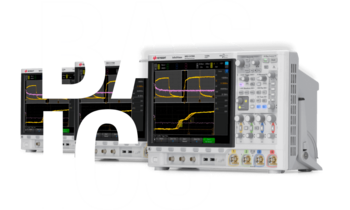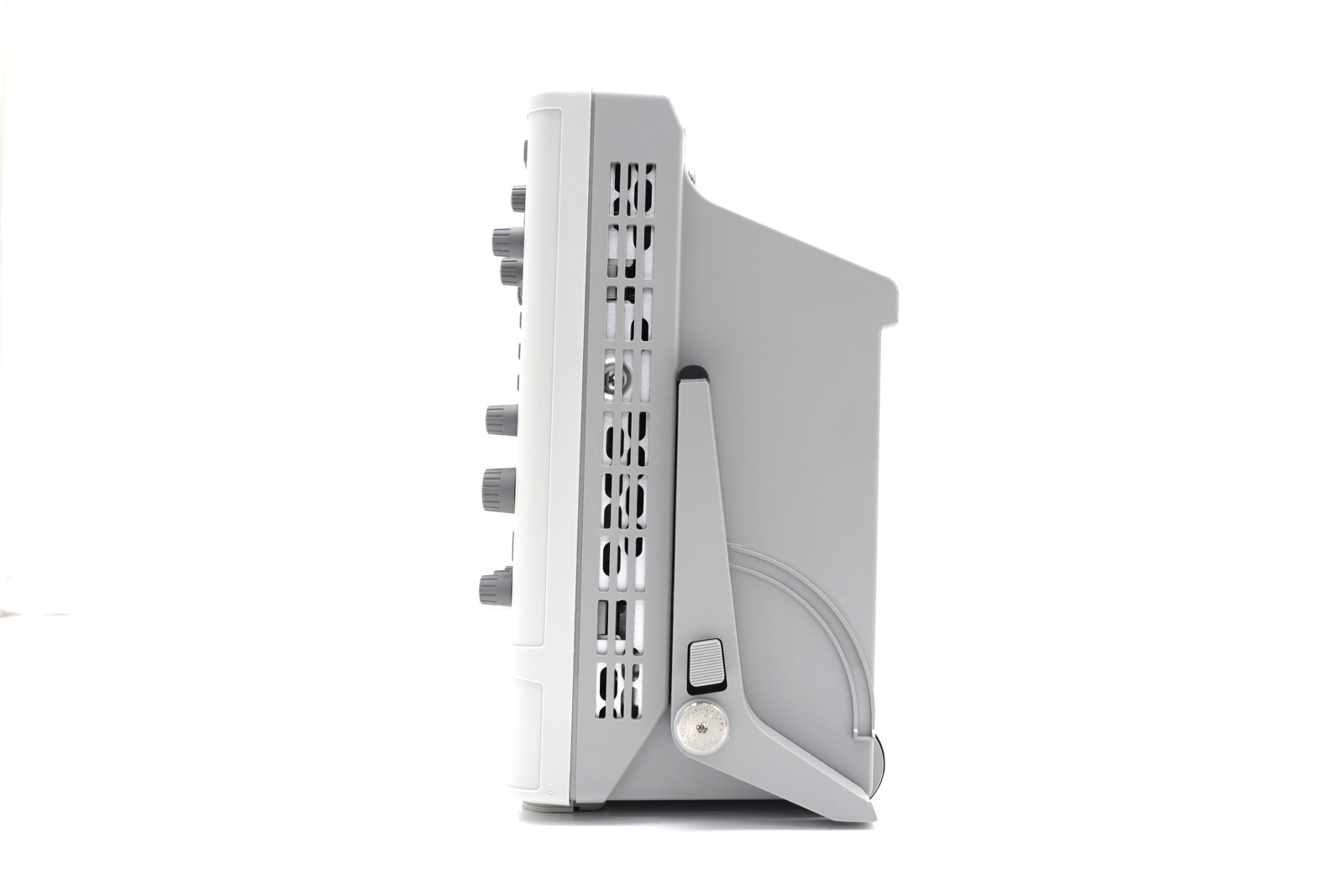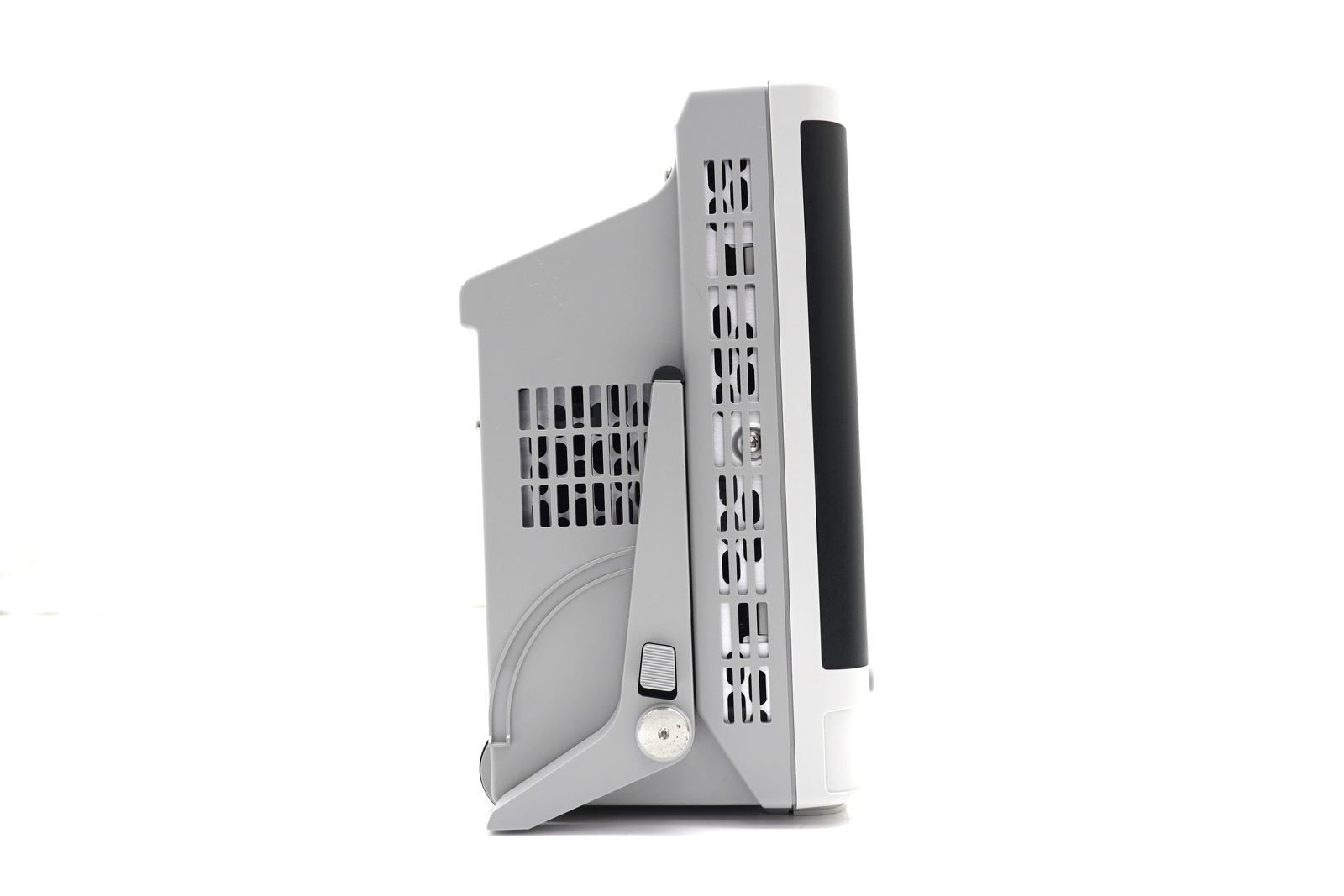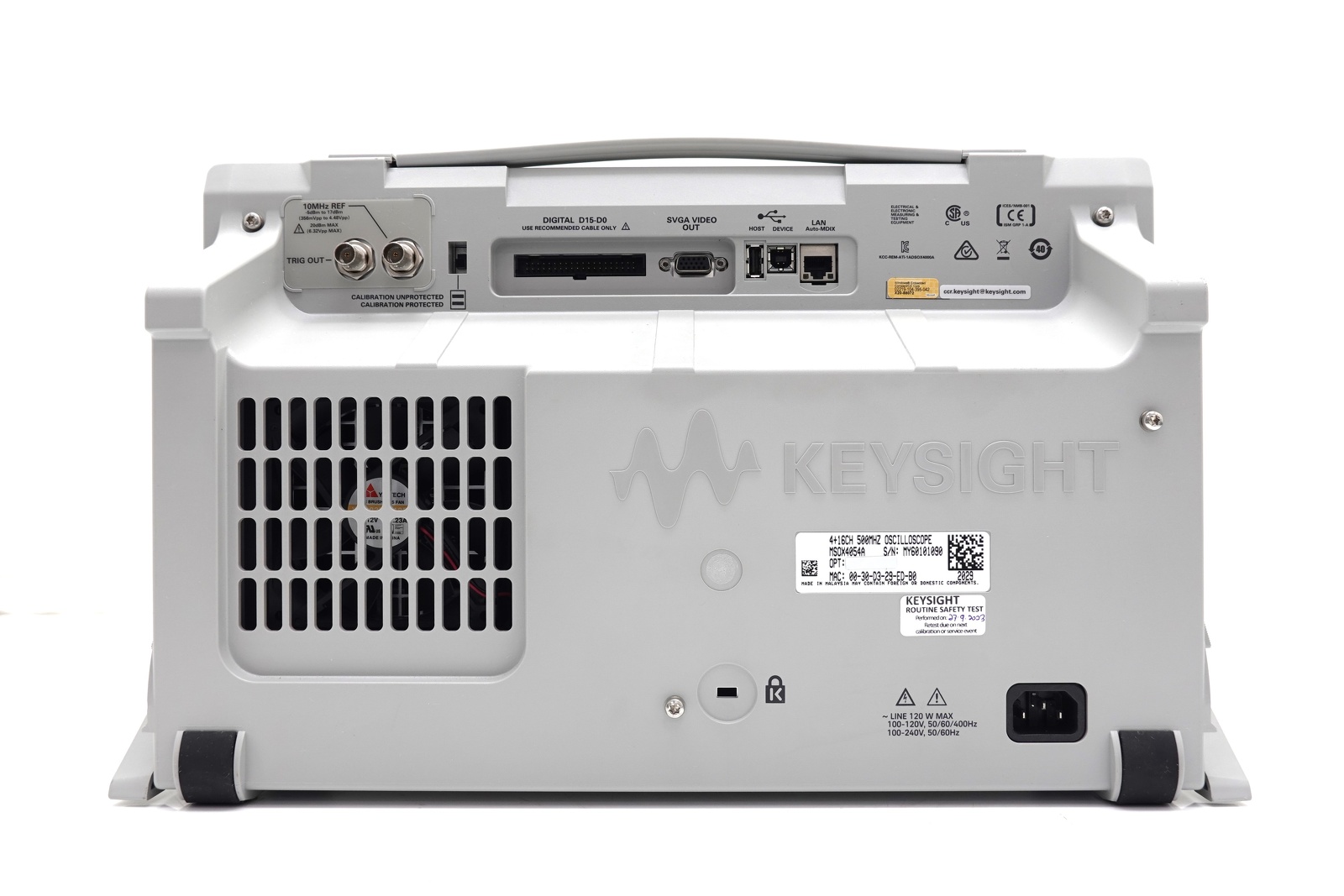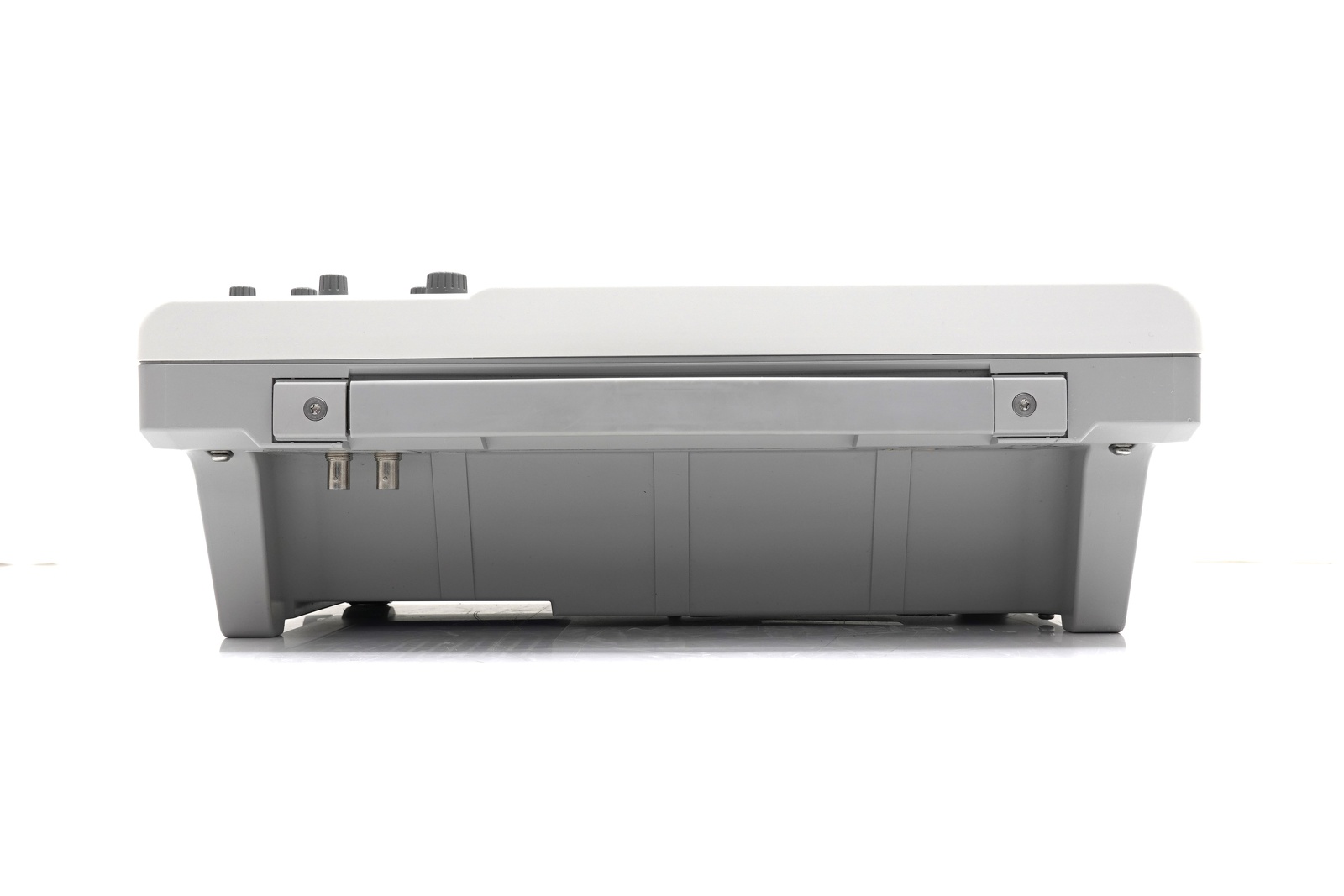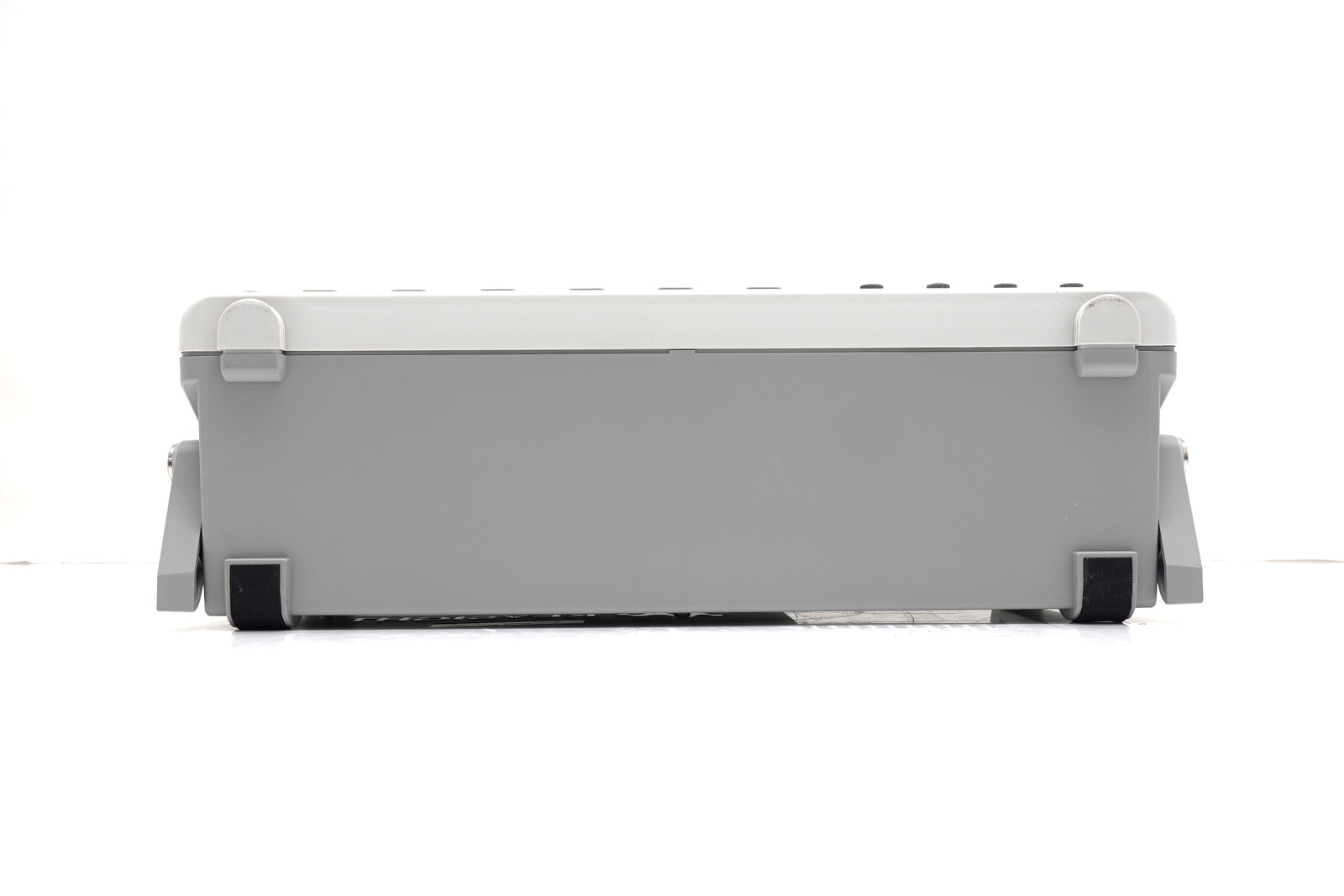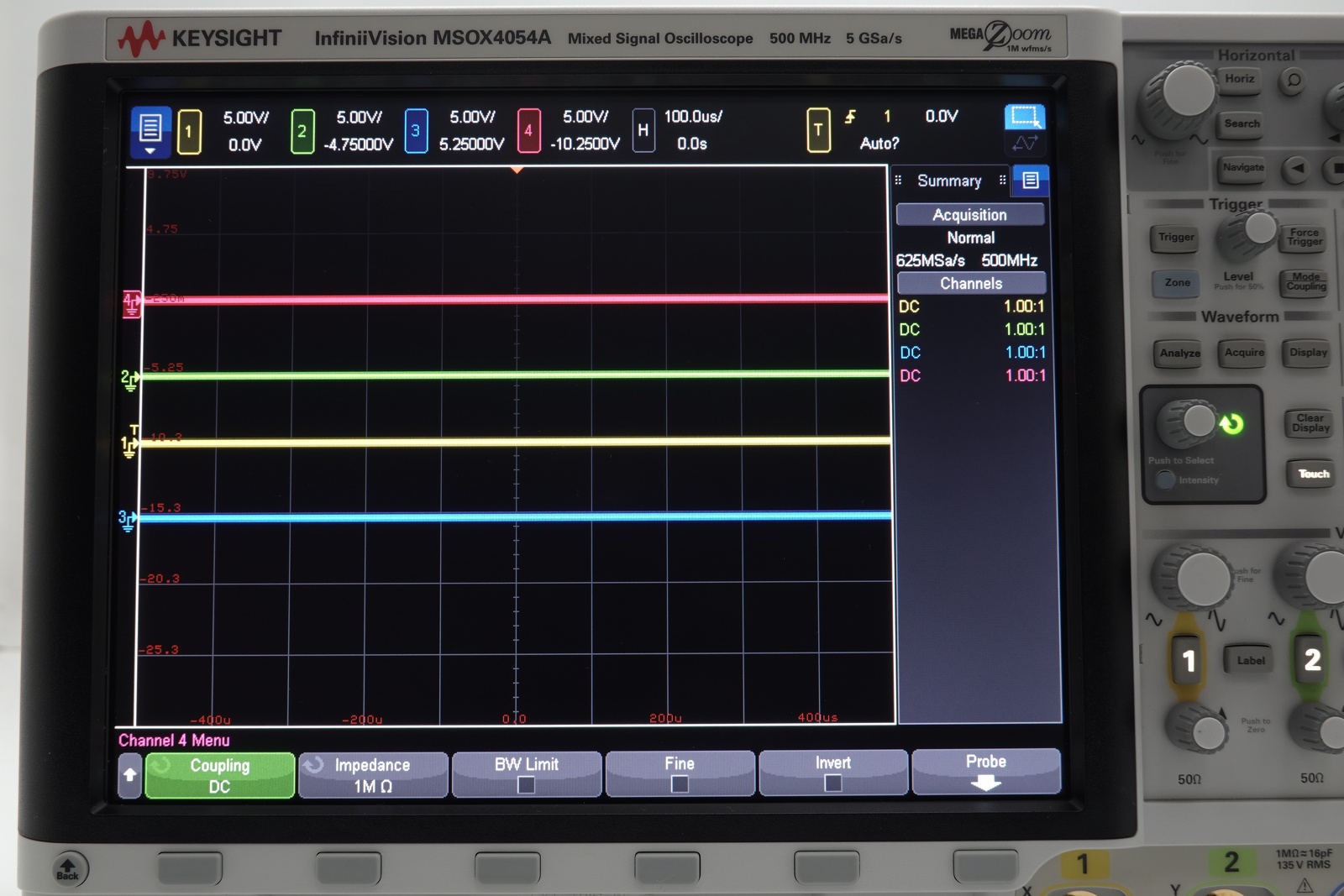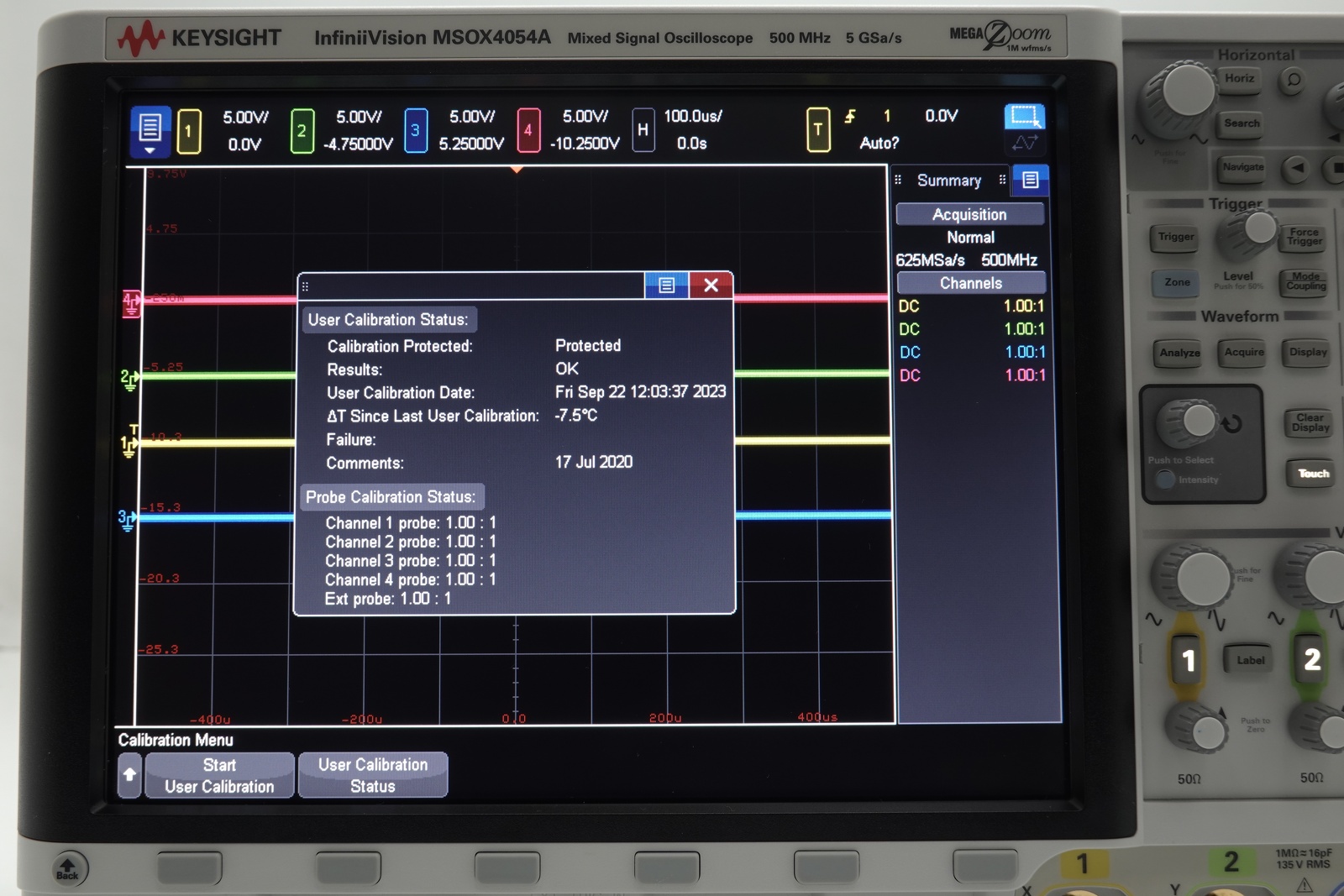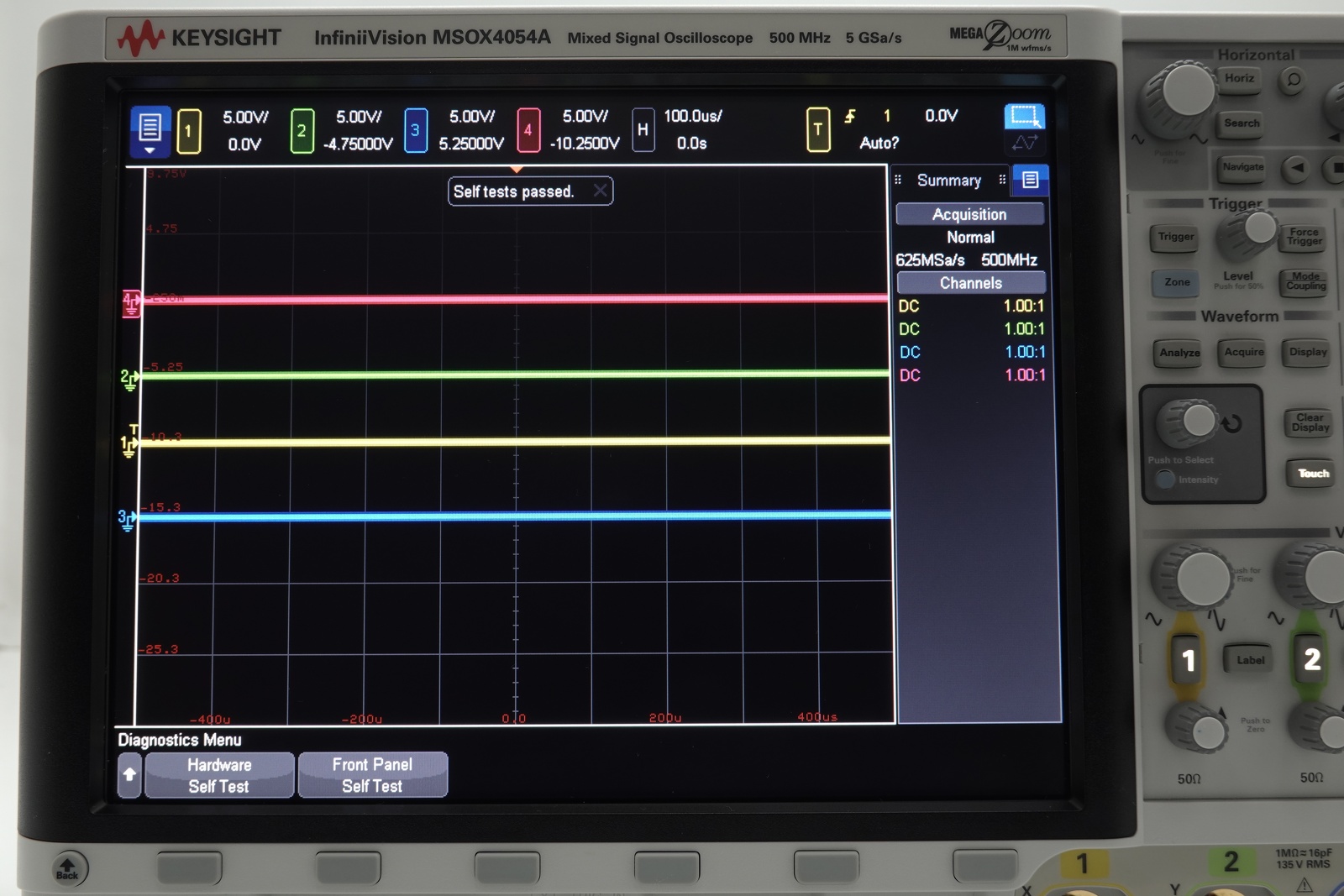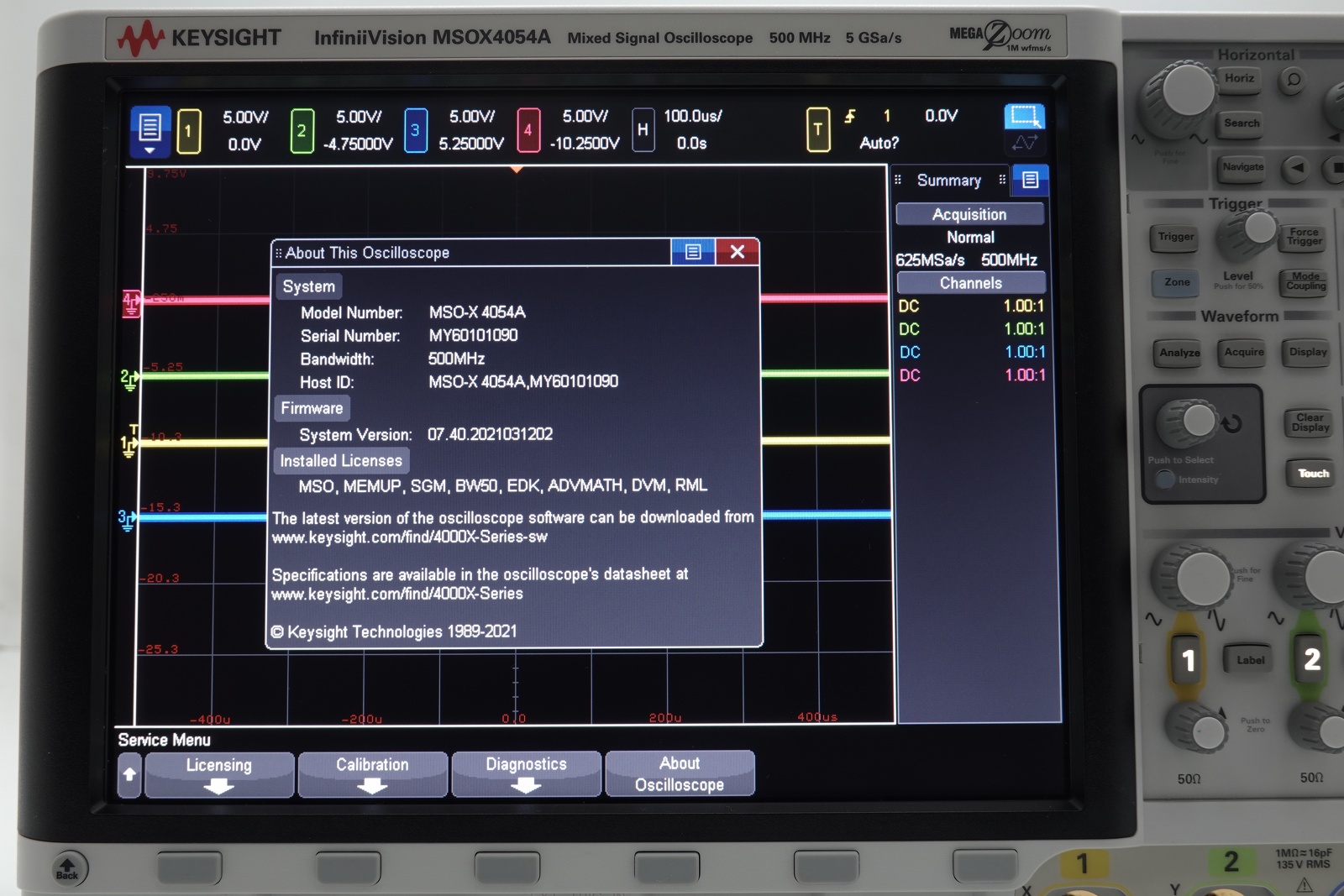Do you need help?
Contact us with any question regarding your used Keysight equipment purchase!

Product selection and configuration assistance
Availabilty, warranty extensions, calibration plans, additional software options, education discounts etc.
Keysight MSOX4054A
Mixed Signal Oscilloscope / 500 MHz / 4 Analog Plus 16 Digital Channels
Keysight MSOX4054A
Mixed Signal Oscilloscope / 500 MHz / 4 Analog Plus 16 Digital Channels
Cannot ship to:
European Union
Switzerland
Norway
Turkey
Unit only ships within China.
Unit ships worldwide.
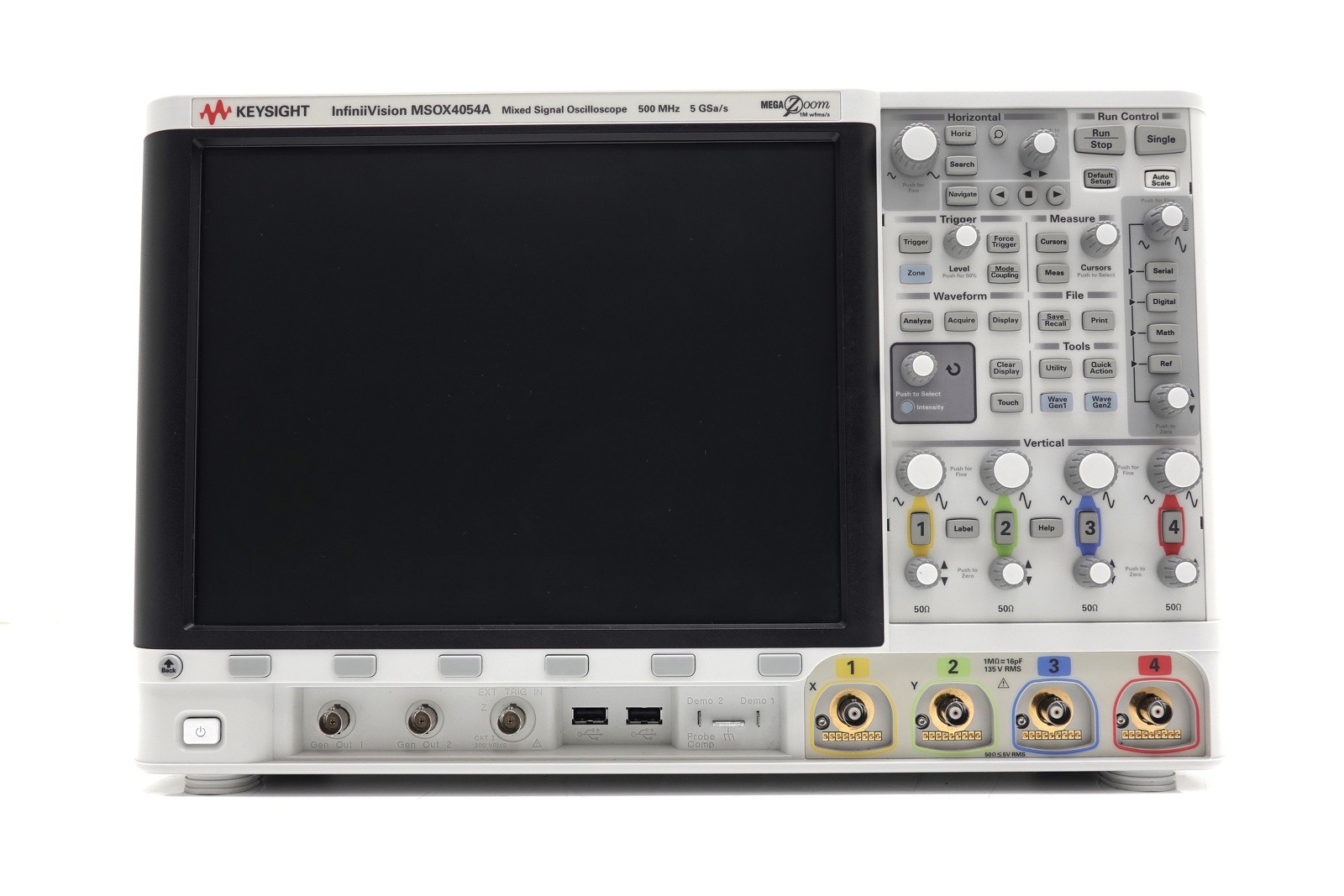
Keysight Used
Keysight MSOX4054A
From
USD 8,809.48 Save 65%
Installed Options
| ADMATH | |
| BW50 | |
| DVM | INTERGRATED DIGITAL VOLTMETER (DVM), INSTALLED FIXED PERPETUAL LICENSE |
| EDK | EDUCATION AND TRAINING KIT, INSTALLED FIXED PERPETUAL LICENSE |
| MEMUP | |
| MSO | |
| RML | |
| SGM |
Addable Options
Request a customized version of this model by requesting a Custom Quote
Product Specifications
Keysight InfiniiVision 4000 X-Series oscilloscopes are engineered for next-generation performance to deliver waveform update rates 20 times faster than the competition. A large 12.1-inch capacitive touch screen combined with innovative hardware-based zone touch triggering means you can easily capture and view your signals. Have confidence you will catch even the rarest of glitches and see more with the 4000 X-Series.
- 500 MHz
- 4 analog plus 16 digital channels
- Easily view signals on the large 12.1-inch capacitive touch screen
- Isolate signals in seconds with exclusive Zone touch triggering
- Capture more data with 4 Mpts memory and standard segmented memory
- See more signal detail with 1,000,000 wfms/s update rate
- Expand your measurement capabilities with full upgradability: Add bandwidth, dual-ch 20 MHz arbitrary WaveGen, 3-digit DVM, serial trigger and analysis & mask testing at any time
Accessories
Accessories only included if shown in the pictures.
Other accessories that are not listed and included in the offer can be purchased separately at an extra cost with your purchase of a Keysight Used or Keysight Premium Used unit. Please specify in the comment field which additional accessories or support you are interested in.
For separate or post-purchase ordering, please contact your local Keysight office or Keysight Partner here. Or check our online store if available for your region here.
Ready To Get Started?
FAQs
What are the main differences between Keysight New, Keysight Premium Used & Keysight Used equipment?
| Keysight New | Keysight Premium Used | Keysight Used | |
|---|---|---|---|
| Savings | None | Up to 70% | Up to 90% |
| Condition | New | Like New | Working Condition ¹ |
| Firmware | Latest | Updated | As is |
| Calibration | Full | Full | As listed |
| Accessories | New | New | As listed |
| Warranty | 1 to 5 Years ² | Like New | 90 Days Warranty |
| Customization | Possible | Possible | Limited |
Learn more about Keysight Premium Used Here
Can I configure a unit to meet my personal needs?
Customization is generally possible with our Keysight Premium Used equipment. The majority of our Keysight Premium Used equipment can be configured just the way you need it. Options can be added at additional cost.
Customizing Keysight Premium Used equipment might change the delivery and lead time of the item.
Some Keysight Used products cannot be customized. Use the contact option on the product page to check with the our eStore team.
What accessories are included?
Keysight Premium Used equipment typically comes with the same accessories and warranty as new products.
Can you include other accessories?
We currently only offer those accessories which are part of the listing. Other accessories can be purchased separately at extra cost with your purchase of a Keysight Used or Keysight Premium Used unit.
Please mention in the comment field which additional accessories or support you are interested in.
For seperate or post-purchase ordering, please contact your local Keysight office or Keysight Partner here. Or check our online store if available for your region here.
Get an Account and Keep Track of Models, Prices, and Availability
Education
and Non-profit Customers Can Save Extra
Oscilloscopes Quick-Facts
What is an Oscilloscope?
Simply put, an oscilloscope is your go-to instrument when conducting a wide range of measurements on an electric circuit. It is an indispensable tool when developing, testing and understanding electronic devices or components. An oscilloscope connects directly to your device under test (DUT) and visually displays the signal it receives. It allows for extensive analysis and troubleshooting when working with electrical and electronic circuitry, making it the single most versatile and valuable tool on your workbench.
Watch the “Oscilloscope Survival Guide – The 2-Minute Guru (s1e1)” now
Digital Storage Oscilloscopes
One of the most commonly used types of scope is the Digital Storage Oscilloscope, or DSO. A DSO samples and converts analog inputs to digital data, making it available for display, analysis and storage (hence the name) for further comparisons. As a DSO can measure signals such as voltage and current over time with accuracy, this is a great choice to help with debugging and general diagnostics to ensure your circuits and devices behave exactly as intended.
Mixed-Signal Oscilloscopes
Mixed-Signal Oscilloscopes, or MSOs, go one step further. They provide all the capabilities of a DSO, but add the option of connecting a logic analyzer. This lets you simultaneously input both analog and digital signals. These can then be displayed and aligned all on the same screen. If you need to monitor and test time-sensitive interactions between analog and digital signals, this instrument will help you do just that. In addition, it tends to be more user-friendly than a pure logic analyzer: If you have worked with a DSO before, it will not be that difficult to switch to an MSO.
Conclusion
Oscilloscopes are vital tools for a wide variety of industries, such as telecommunication, engineering and the sciences. Read our full Oscilloscope Basics Guide form our Knowledge Hub. A sturdy instrument can potentially serve you for many years, making it well worth the investment. Should high prices have so far deterred you from purchasing an oscilloscope or upgrading your current one, the Keysight Used Equipment Platform might be just the solution for you. Here, you can find high-quality instruments at significant discounts. Thanks to our ongoing trade-in program, we are continually adding more items to our inventory. Check our latest offers above.
How to Use an Oscilloscope?
How you can and should use your oscilloscope depends on the model and accessories you have available as well as the measurements you are looking to perform. The simple steps below should set you up for most standard usage situations.
9 Simple Steps – This is How You Use Your Oscilloscope
- Start by connecting your probe to the oscilloscope and boot up the instrument.
- Make sure the correct channel is turned on and all others are turned off.
- Set coupling to DC to see the entire signal or to AC to filter out DC components.
- Make sure probe controls are set to the correct attenuation.
- Using the trigger button, set your trigger event and source.
- Test and tune your probe on the built-in square wave generator by attaching both the ground hook and probe tip. If the image of the waveform does not appear static yet, adjust the trigger level slightly to stabilize it.
- If needed, tune the compensation capacitor built into the probe head by adjusting the screw controlling it, until the edges of the square wave are perfectly angular – or simply use the “Auto” tune button, if your scope provides one.
- Now you’re ready to start your measurements. Attach your probe and ground clip to your device or component under test.
- Don’t forget to use the oscilloscopes display controls to center the resulting waveform on the screen and to zoom in or out as needed.
Overall the more capabilities your oscilloscope has to offer, the more complex setup will become. For example:
- If you are looking to use an MSO to acquire and analyze both analog and digital signals, timing skews can occur.
- De-skew controls will align the separate signals for accurate time correlation.
- You will also need to decide betweentiming and state acquisition, letting the scope either take rhythmically timed samples or whether to go by specific logic state events of the signal.
Work with your oscilloscope and its accompanying fact sheet or user guide to familiarize yourself with all the options available to you. Want to read more? Check out our Oscilloscope Basics Guide or watch our new Mega Guide on how to use oscilloscopes:
How to Use an Oscilloscope to Measure Voltage?
The default settings of most oscilloscopes will display voltage over time. In other words, the waveform displayed on the oscilloscope’s screen, maps a signal with voltage on the vertical or y-axis and time on the horizontal or x-axis. To review how to set up your oscilloscope for measurements have a look at the notes in the “How to Use an Oscilloscope” section above.
Watch “Measuring Voltage with an Oscilloscope – The Keysight 2-Minute Guru (s2e5)” now
Manually Calculating Voltage Using an Oscilloscope
The most basic way of calculating voltage is to then count divisions from top to bottom and multiply this by the volts/division (y-axis scale) displayed on the screen. With the majority of oscilloscopes, however, such manual calculations will be unnecessary.
The Easy Way of Calculating Voltage with your Oscilloscope
Simply choose the “measure” button or touch screen option and select “peak-to-peak voltage”. Alternatively, mark two points with the screen cursors to measure their difference. Some scopes even feature a fully integrated digital volt meter (DVM). With an MSO, you will be able to not only measure analog signals parameters such as voltage over time, but can also verify concurrent digital signal integrity simultaneously. Although triggering works very differently for digital and analog signals, your MSO will de-skew and synchronize them, allowing for accurate and easy measurements. It really provides almost all the functions of a logic analyzer with much greater ease of use and versatility.
Performing a Logic Circuit Test
On top of measuring voltage on your analog signal as described above, you can also use your MSO to measure the digital signal and perform a logic circuit test.
- Connect two oscilloscope probes to Channel 1 and Channel 2 and press the “Auto” key.
- Use the display controls to center both waveforms on the screen in order to show their intersections and a complete cycle.
- At the intersections of the waveforms, use the cursor to measure the voltage, i.e. the low and high voltage flips, then also record the logic output level, i.e. the logic high and logic low.
More on Oscilloscopes: How to use an Oscilloscope – The Oscilloscopes Basics Guide.
How to Measure Inductance with an Oscilloscope and a Signal Generator?
With your oscilloscope you can measure inductance even without an LCR meter. For example, you may use a current probe to measure the inductance on a voltage-current slope, by reading the peak current (amps) and time between pulse (microsecond). Inductance can be found by multiplying these values and dividing the sum by the peak current. You can also create a Tank circuit by setting up an inductor, with a known capacitance, and placing it in series with a resistor. Inductance can then be calculated from the resonant frequency. Alternatively, connect a resistor (with a known value) to the system or inductor under test. Apply a signal and adjust the frequency, so that equal voltages appear across both devices. A DSO will work just as well as an MSO here, as you will only need to rely on the analog functionalities of the scope. More about this topic in this our YouTube series:
“What is Inductance? The 3 Effects of Inductors – The 2-Minute Guru (s2e9)”
Read more in our Oscilloscope Basics Guide.
Where can I buy used Keysight Oscilloscopes?
Keysight offers pre-owned units at a savings of up to 70%. The units are refurbished by Keysight and are fully calibrated and ready to use.
To see our full range of premium used equipment, check out the complete listing here. You can easily search, based on specifications like bandwidth, sampling rate, and memory depth. If you need help choosing the best model for your needs, check out our helpful guides or fill out the “Contact Us” Formhere.
What are the benefits of buying used oscilloscopes from Keysight?
When you purchase a high-quality used scope from Keysight, you now possess a new unit’s superior performance and functionality while saving up to 70%.
We offer two standards of used products: “Premium Used” and “Used”.
Premium Used:
Up to 70% savings
Like-new condition
Updated firmware
Fully calibrated
Same great warranty as a new product (1-5 years depending on the model and region)
Used:
Up to 90% savings
In full working condition
30-day right of return
Whether buying new or used, you can always count on the high quality and reliability for which Keysight is renowned.
What is the basic function of an oscilloscope?
The primary function of a scope is to measure waveforms of electrical signals. Engineers use them for troubleshooting circuits, testing equipment performance, and understanding electronic circuit behavior. Oscilloscope probes are connected to the circuit being tested so the scope displays voltages on its display screen. The user then adjusts controls to display signal amplitude and offset to observe the waveforms. The waveforms can then be recorded for future reference.
Who would benefit from the use of an oscilloscope?
Engineers in many fields can benefit from the use of a scope. Non-engineers, such as technicians, electricians, and researchers, can also benefit from using an oscilloscope.
For example:
An engineer who needs to understand what's happening in the circuit they are working on
A technician who needs to troubleshoot equipment performance
A student who wants to learn more about circuits
How do you measure current with an oscilloscope?
One of the most common measurements made with a scope is current. Current is simply the measurement of the flow of electricity through a circuit or conductor, measured in amps. Since it's essential to understand how much current is being used in circuits, whether for safety reasons or power usage analysis, this measurement can help determine if something is malfunctioning.
There are three types of current:
High current (hundreds to thousands of amps)
Low current (microamp to amp)
- In-between (10 milliamps to 30 amps).
Manual measurements, such as the Ohm's Law Method, can be used to measure current using your scope, but this can be inaccurate and difficult to document. A more efficient way to test current is using a current probe attached to your scope. You will observe your measurement in amps directly on your screen with no calculations required. Different types of current probes can be used with our premium used oscilloscopes.
For a quick and easy explanation of how to measure current with your oscilloscope, check out this video.
Learn Oscilloscope Fundamentals and Get the Most out of Your Equipment
